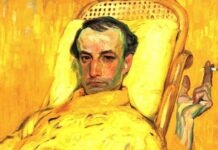by Jack Halberstam, University of Southern California
~
Some will say that José Ésteban Muñoz died an untimely death – he died too young with too much still to do. However, like his formulation of queerness as a state of being that is present in its absence, available as a lost past, unreachable as a beckoning future, I would rather say that Muñoz died as he lived, in a queer time that he may not have chosen but that insistently chose him. Like many of the exotic queer art world natives about whom he wrote, Muñoz sacrificed everything within the here and now for a then and there that had not yet and could not yet arrive. Like Jack Smith arriving late to a performance that he would then abort, or like Fred Herko meeting death early by making his last performance “a perfect jeté” out of a friend’s apartment window (Cruising Utopia, 148), Muñoz left us all shocked and surprised by his sudden exit, saddened and bereft by his final decline. Muñoz’s departure was not quite a jeté, nor was it a failure to show; it was rather an abrupt cessation of a life that had spun quickly around a chain of precious moments offering brief glimpses of another world while losing energy in the present for the here and now.
How might we understand Muñoz’s early death through his own work as a gesture of refusal, a refusal of timeliness itself? In “A Jeté Out the Window” in Cruising Utopia, Jose writes about the staging of Fred Herko’s suicide as his final performance. Using the concept of surplus value to frame acts, work, modes of being which exceed capitalist flows, José uses Herko’s leap into the void as an example of an excessive gesture – one that could be read as useless, childish, wasteful, nonsensical – but that literally refuses all that capitalism, and capitalist notions of time, offer. Instead, it signals the way in which, within queer aesthetic production, escape and refusal are juxtaposed in an altered temporality that does not respect the markers of “late” and “early” at all.
In the context of queer worlds, furthermore, excess and loss sit side by side as potent evidence of the utopian imagination. For the queer utopian, the ideal world cannot be reached through the here and now; it must be conjured by crazy, risky, wild leaps into the void. This notion of the utopian situates art as a guide to future terrains that may or may not ever surface. Muñoz reminded us of this other function for art through his bravura readings of Ernst Bloch. Bloch, Muñoz tells us, understands art as “enacting a pre-appearance in the world of another mode of being that is not yet here” (147). The “not yet here,” like the “already gone,” represent non-straight temporalities within which other possibilities appear fleetingly, like ghosts from the past, glimmers of the future, markers of the anticipated and the lost.
In Fred Herko’s death-embracing leap out of the window of a friend’s apartment, Muñoz finds a performance that defies explication, understanding or rationality; it defies capitalist logics of sense and accumulation. It sheds what it should embrace and embraces what it should fear. It is perfect in its unknowability and absolute vulnerability. The controlled leap into the void performed by Herko makes art out of what is otherwise an uncontrollable descent into death. And Herko’s last dance places queer art in an oblique relation to life itself. If vulnerability is proximity to harm, to unbecoming, then queerness seeks to rewrite the conditions of pain, harm and fear not as identity formations, but as routes to wild embodiment.
Accordingly, I do not come to mourn José Esteban Muñoz; I come to celebrate his wild sense of time, possibility, potentiality. “Queerness is not yet here,” he writes in Cruising Utopia. “Queerness is an ideality. Put another way, we are not yet queer. We may never touch queerness, but we can feel it as the warm illumination of a horizon imbued with potentiality. We have never been queer, yet queerness exists for us as an ideality that can be distilled from the past and used to imagine a future” (1). José, in death as in life, brings us a step closer to “the warm illumination of the horizon” that he possessed the unique ability to see, to describe and to touch. The fact that this horizon is as often death as it is art should not dissuade us from basking in its glow.
_____
Visit the full José Esteban Muñoz gallery here.
_____




